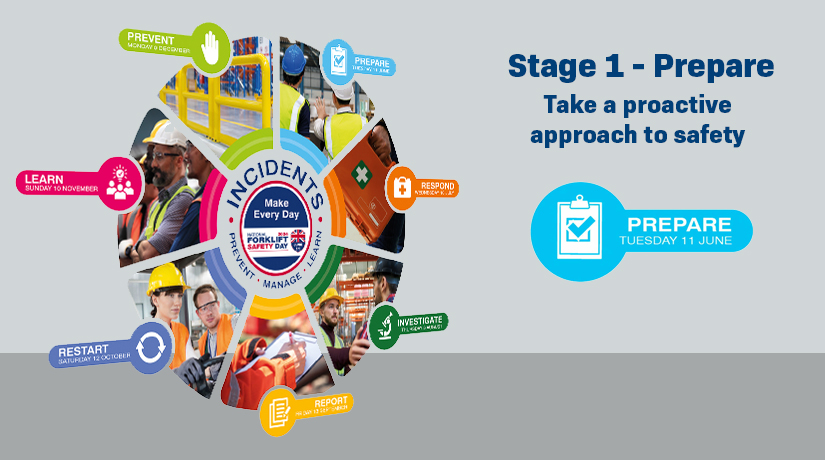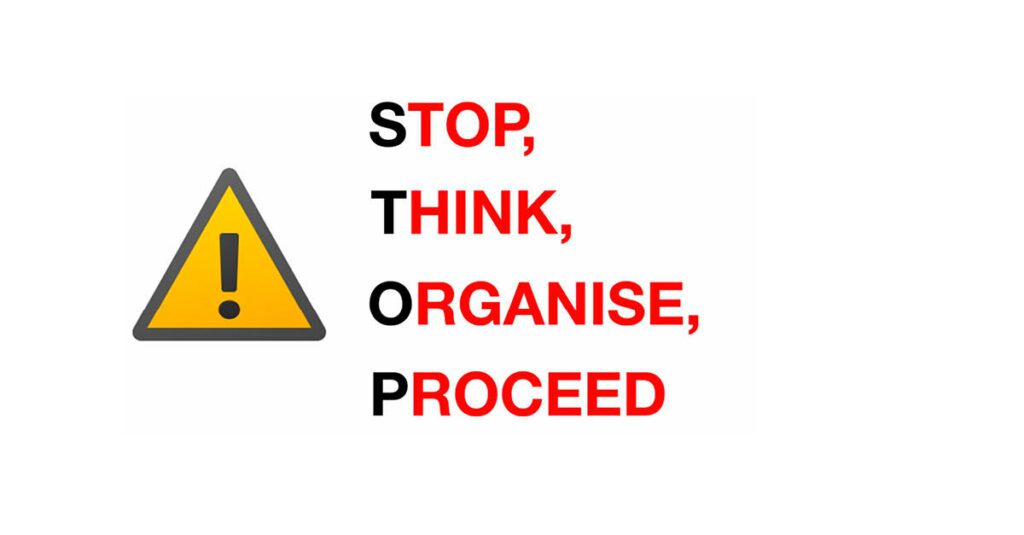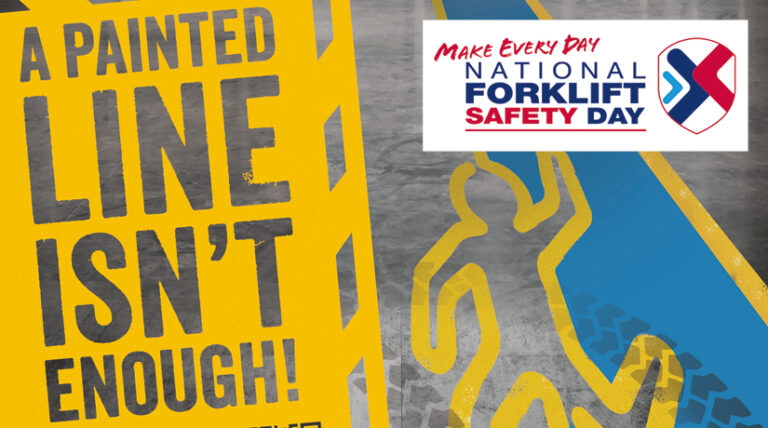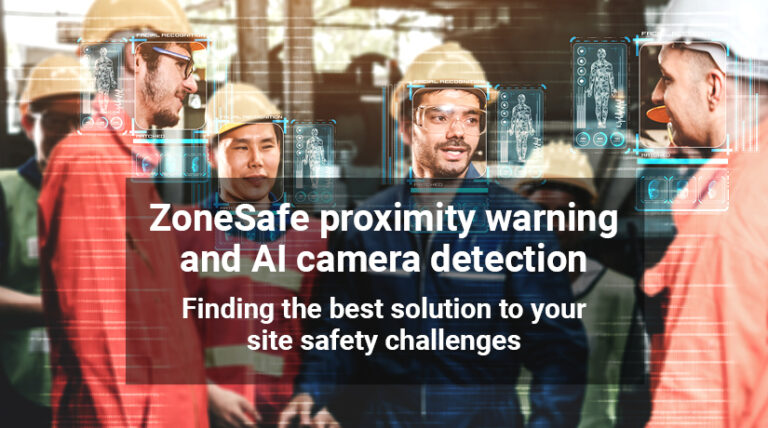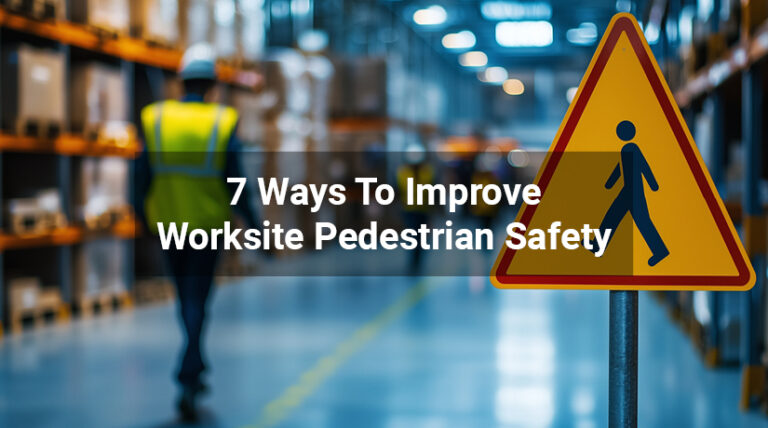The National Forklift Safety Day (NFSD) campaign launched this week under the slogan ‘Prevent – Manage – Learn’. This year’s initiative will explore what actions should be taken before, during and after a forklift incident.
The extended program will focus on the 7 stages of the forklift incident cycle and the strategies for each stage will be highlighted and discussed on specific dates over a 7 month period from June – December.
The campaign launched this week with the first stage of the cycle:
PREPARE
The first stage examines how preparation greatly reduces both the chance of an incident becoming an accident and the severity of an accident should one occur.
The Provision and Use of Work Equipment Regulations 1998 (PUWER 1998) and the Lifting Operations and Lifting Equipment Regulations 1998 (LOLER 1998), obligate employers to take specific actions to maximise workplace safety.
- Equipment must be suitable for the tasks it is used for and maintained in good condition
- Lifting operations must only be conducted by a competent person who has the required skills
- Maintenance and pre use checks of equipment are essential
- Thorough examination is a statutory obligation
- Forklifts must only be operated by authorised and trained personnel
- Unauthorised access to worksites must be prevented
- Supervisors must be trained to monitor and recognise both safe and unsafe work practices – including the use of seatbelts
- Training specific to the vehicles used and the workplace/site layout must be in place
- Training records must be complete and kept up to date
- Refresher training must be in place as a regular scheme and also if/when indicated through performance checks
The HSE L17 booklet provides specific information on the three mandatory training steps:
- Basic
- Job Specific
- Familiarisation
Emergency Procedures
A safe working environment should always be one of the primary goals of any workplace. Taking measures towards accident prevention is key but it’s also important to be prepared for every eventuality so a robust emergency plan must be in place.
Everyone should be trained around emergency procedures and be aware of the actions required during an incident. The safety of site visitors is also a necessary consideration – more information is available in the UKMHA Safe working area charter
An important step in accident prevention is to ensure vehicle operators are trained to recognise hazards including:
- Damaged an unstable loads
- Pedestrians around the working area
- Impact with racking
- Trailer driveaway
The UKMHA uses the acronym STOP as a quick reminder of how to prevent a potential incident from becoming a serious accident:
Remember – the impact of emergencies will be minimised if people:
- Are well trained and competent
- Take part in regular and realistic practice
- Have clearly recorded and rehearsed plans, actions and responsibilities
PREPARE with ZoneSafe
ZoneSafe provides peace of mind by stopping accidents in their tracks. The easy to use system alerts drivers and pedestrians to hazards, raising awareness so that action can be taken to prevent an accident from taking place.
Proximity Warning tags are worn by pedestrians and drivers and use RFID technology to communicate when in close proximity. Pedestrian workers prepare by donning tags as part of their everyday PPE. Sensors and antennas are fitted to vehicles to create a 360 degree detection zone that raises the alarm when breached by tagged personnel.
ZoneSafe is not only used in this way to prevent an accident, but can also be incorporated into emergency procedures by helping to control movement immediately during and following an incident.
Contact ZoneSafe to discuss your forklift safety concerns

